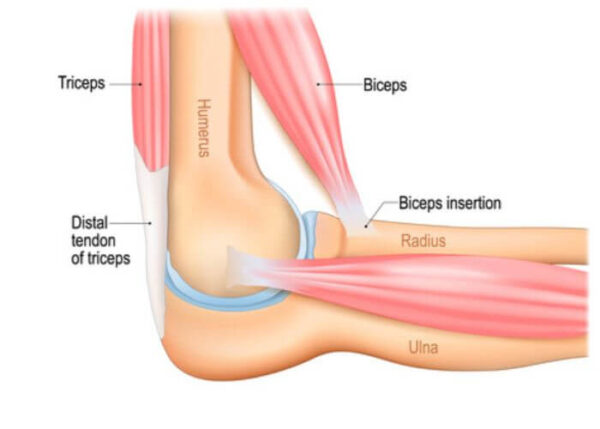Elbow Doctor

Are you experiencing elbow pain? Elbow pain can be caused by an acute or chronic injury. Not every elbow condition requires surgery, and other injuries need immediate surgical intervention. Doctor Riley J. Williams provides diagnosis as well as surgical and nonsurgical treatment options for patients in Manhattan, Brooklyn, New York City and surrounding areas who have sustained an elbow injury. Contact Dr. Williams’ team today!
What is the anatomy of the Elbow?
The elbow is a hinge joint that bends and also allows for rotational movement of the forearm. The elbow is the joint connects the humerus (upper arm) to the radius and ulna bones of the forearm. The elbow is stabilized by a variety of ligaments. Elbow injuries can be extremely painful and can result in a significant reduction in the range of motion and function of the elbow joint. Orthopedic elbow specialist, Dr. Riley J. Williams, has many years of experience in diagnosing and treating patients in Manhattan, Brooklyn, New York City, NY and surrounding areas who have experienced an injury to the elbow.

What makes up the elbow joint?
The elbow consists of three different bones: the humerus, the radius, and the ulna. The humerus is the largest bone of the arm. The radius and ulna are the two bones that make up the forearm. The radius is found on the thumb-side of the arm, while the ulna is on the pinky-side. Collateral ligament stabilize the elbow in the coronal plane. Articular cartilage lines the surfaces of all the above bone within the joint to facilitate pain free, smooth joint motion.
What are the main ligaments in the elbow?
Along with the bones, several ligaments are crucial in stabilizing the elbow. These ligaments include:
- Ulnar collateral ligament (UCL): this ligament connects the humerus and ulna on the inside of the elbow joint.
- Annular ligament: this ligament connects the radius and the ulna, ensuring that they remain stable during motion.
- Radial collateral ligament (RCL): the RCL is similar to the UCL. It connects the humerus to the radius on the outside of the elbow and aids in maintaining stabilization during movement.
What muscles, tendons and nerves make up the elbow joint?
In addition to the bones and ligaments, there are a few muscles, tendons and nerves that allow for elbow-based movements such as throwing and lifting:
- Biceps and triceps tendons: these tendons connect the biceps and triceps muscles to the radius and the ulna, respectively. Flexion of these muscles causes the elbow to bend and extend.
- Flexor and extensor muscles: these muscles in the elbow allow for movement of the wrists and fingers.
- Median, ulnar, radial nerves: these three important nerves in the elbow allow for sensation and function of the hands, fingers, and forearms. These nerves cross the elbow joint in distinct locations.
What are common elbow injuries or conditions?
Although the elbow is not the most complex joint in the body, it can still be injured or damaged in multiple ways. Some of the most common injuries include:
- Golfers elbow – Medial epicondylitis
- Tennis elbow – Lateral epicondylitis
- Distal Biceps Tendon Tears
- Elbow Dislocation
- Distal biceps tendon tear
- Triceps tendon tear
- Ulnar collateral (medial collateral) ligament tear – “Tommy John Injury”
- Radial collateral (lateral collateral) ligament tear
- Cubital tunnel syndrome – ulnar nerve entrapment
For more information on elbow anatomy, or for additional resources on causes of elbow pain and the treatment options available, please contact the office of Riley J. Williams, MD, orthopedic knee surgeon serving Manhattan, Brooklyn, New York City, NY and surrounding areas.
